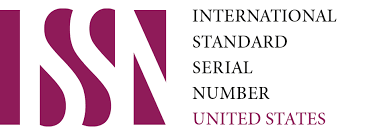The Cold War
Keywords:
Conflict, distribution, importanceAbstract
The origins of the Cold War are often placed in Europe by orthodox historians and so ignore its global origins as well as the issue of whether the Cold War's development was driven by European events
References
This definition from the British military fitted the interpretation and of western policy in the 1950s.
For realist interpretations see from a historical perspective, see H. Jones and R. B. Woods, Dawning of the Cold War: the US Quest for Order (Athens, Ga., 1991); and for the issue of power, see M. Leffler, A Preponderance of Power: National Security, the Truman Administration and the Cold War (Stanford, Calif., 1992).
For an introduction to the non-European world and the Cold War at the start of the sixties see John W. Young and John Kent, International Relations since 1945: A Global History (Oxford, 2004), pp. 160–3, 165–70.
For details see Leffler, A Preponderance of Power, chap. 1; P. Dawson Ward, The Threat of Peace: James F. Byrnes and the Council of Foreign Ministers 1945–46 (Kent, OH, 1979); J. Kent, British Imperial Strategy and the Origins of the Cold War 1944–49 (Leicester, 1993), pp. 76–116.
M. Hogan, The Marshall Plan: America, Britain and the Reconstruction of Western Europe 1947–52 (Cambridge, 1987).
The Korean War began as a civil war (i.e. the Cold War) but became an international armed conflict with Chinese troops attacking American forces (a hot war).
This argument is put in Young and Kent, International Relations, pp. 121–26.
Of the numerous books on Vietnam see especially F. Logevall, Choosing War: the Lost Chance for Peace and the Escalation of War in Vietnam (Berkeley, Calif., 1999) and David Kaiser, American Tragedy: Kennedy, Johnson, and the Origins of the Vietnam War (Cambridge, Mass., 2000).
Downloads
Published
Issue
Section
License

This work is licensed under a Creative Commons Attribution-NonCommercial 4.0 International License.
User Rights
Under the Creative Commons Attribution-NonCommercial 4.0 International (CC-BY-NC), the author (s) and users are free to share (copy, distribute and transmit the contribution).
Rights of Authors
Authors retain the following rights:
1. Copyright and other proprietary rights relating to the article, such as patent rights,
2. the right to use the substance of the article in future works, including lectures and books,
3. the right to reproduce the article for own purposes, provided the copies are not offered for sale,
4. the right to self-archive the article.













